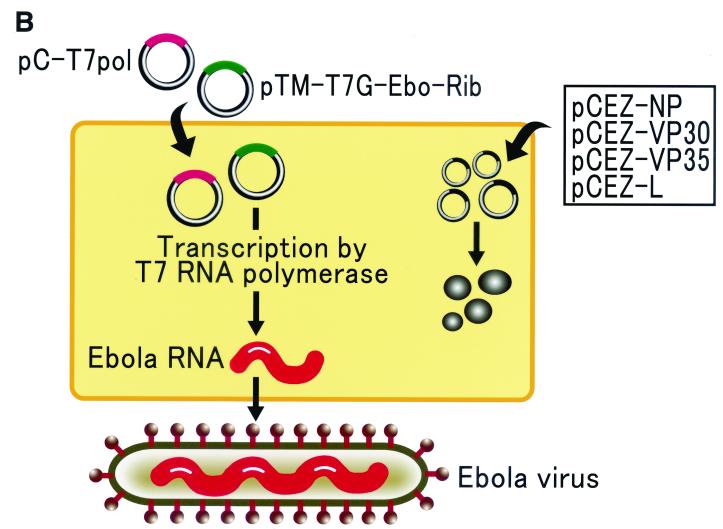FIG. 1.
Generation of Ebola virus entirely from cloned cDNA. (A) Schematic diagram of cDNA plasmids for Ebola virus cRNA or vRNA synthesis and their efficiencies for virus generation. T7 and Rib indicate T7 RNA polymerase promoter and ribozyme sequences. G designates a guanine nucleotide inserted between the promoter and the Ebola virus cDNA. Synthesis of positive-sense Ebola virus cRNA is represented by “Ebola,” while the inverse lettering denotes synthesis of negative-sense vRNA. To determine the efficiency of virus generation, we cotransfected Vero E6 cells with protein expression plasmids and the plasmid for Ebola virus vRNA or cRNA synthesis. Four days after transfection, we measured the efficiency of virus generation by determining the dose required to infect 50% of tissue culture cells (TCID50) per ml of supernatant. The data are representative results from three independent experiments. Experiments for the generation of Ebola virus as well as the characterization of recombinant Ebola virus were carried out in the BSL4 facility at the Canadian Science Centre for Human and Animal Health, Winnipeg, Canada. (B) Schematic diagram of Ebola virus generation. Cells were transfected with plasmids for the expression of the Ebola virus NP, L, VP30, and VP35 proteins, and with the plasmid for Ebola virus cRNA or vRNA synthesis, controlled by T7 RNA polymerase promoter and ribozyme sequences. T7 RNA polymerase was provided by cotransfection of cells with pC-T7Pol.


